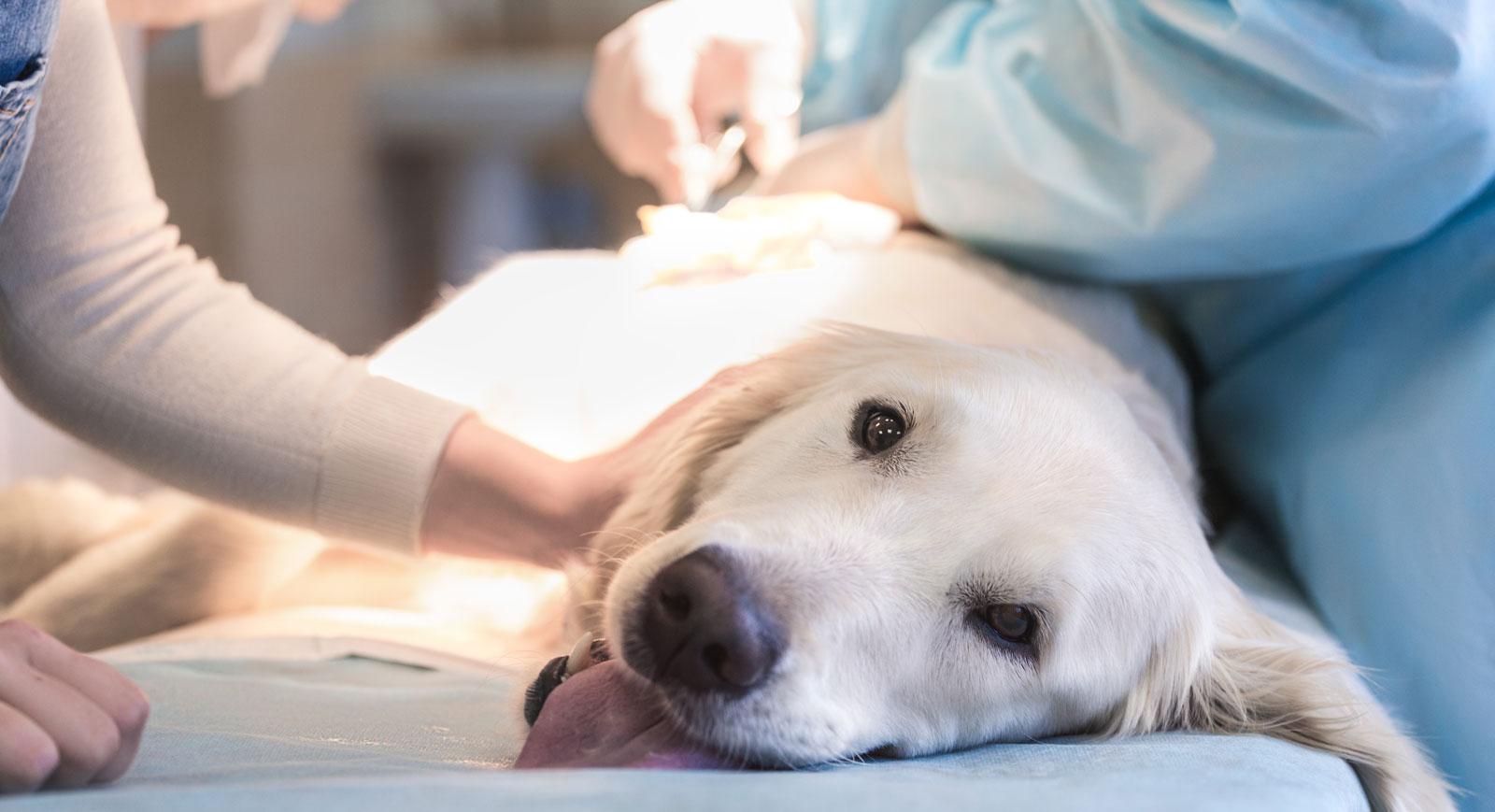Surgeries
We work with our sister site Animac Vets to provide a range of surgeries, including laparoscopic surgeries.
Laparoscopic Surgery
Village Vets can now offer our clients minimally invasive keyhole surgery (laparoscopy) at our sister site Animac Vets.
This new service offers a less invasive & less traumatic option for female neutering and other surgical procedures, with a faster and more comfortable recovery period.
What is Laparoscopy?
Laparoscopic surgery is an advanced technique that can be used as an alternative to traditional “open” surgical procedures.
A camera is inserted through a small incision in the abdomen and magnifies the internal structures on a TV monitor, allowing great visualisation & precision.
Additional small incisions are made to facilitate the use of surgical instruments like forceps and the sealing/divider system.
The vessel sealing system that we use during laparoscopy is called LigaSure, an advanced & secure method to prevent bleeding.
How is this less invasive than a normal spay and what are the benefits?
During a normal or open spay, the surgeon creates an incision large enough to get their fingers into the abdomen.
The laparoscopic procedure with a smaller incision, has a lower risk of infection, quicker recovery time, reduced blood loss and significantly less pain for your pet.
Is the uterus removed with the ovaries?
No. With keyhole surgery only the ovaries are removed. This has been common practice when spaying in the USA & Europe for more than 35 years.
Does it cost more?
There is specialised equipment and training needed to perform these procedures, so the cost will be more than traditional open surgical procedures, but not as much as you may think. Please contact us at the practice to enquire about the costs involved.
What other procedures can be performed?
- Crytporchidectomy: Surgical removal of an undescended testicle.
- Gastropexy: A surgical procedure where the stomach is attached to the abdominal wall in order to prevent Gastric Dilatation and Volvulus (GDV), commonly called a gastric torsion or bloat. GDV is a life-threatening condition, where the stomach flips or twists, trapping air and gases in the stomach and most commonly occurs in large breed, deep chested dogs.
- Internal Biopsy: Laparoscopy is a minimally invasive method of obtaining a tissue sample from an organ or area inside the body. e.g the liver or intestines. The tissue is then analysed in a laboratory to help diagnose a variety of disorders and diseases. Because the veterinary surgeon can see the biopsy site using the laparoscopic cameras, they can choose the best representative area to take the sample biposy from and can more easily monitor for bleeding.
Village Vets can now offer our clients minimally invasive keyhole surgery (laparoscopy) at our sister site Animac Vets.
This new service offers a less invasive & less traumatic option for female neutering and other surgical procedures, with a faster and more comfortable recovery period.
What is Laparoscopy?
Laparoscopic surgery is an advanced technique that can be used as an alternative to traditional “open” surgical procedures.
A camera is inserted through a small incision in the abdomen and magnifies the internal structures on a TV monitor, allowing great visualisation & precision.
Additional small incisions are made to facilitate the use of surgical instruments like forceps and the sealing/divider system.
The vessel sealing system that we use during laparoscopy is called LigaSure, an advanced & secure method to prevent bleeding.
How is this less invasive than a normal spay and what are the benefits?
During a normal or open spay, the surgeon creates an incision large enough to get their fingers into the abdomen.
The laparoscopic procedure with a smaller incision, has a lower risk of infection, quicker recovery time, reduced blood loss and significantly less pain for your pet.
Is the uterus removed with the ovaries?
No. With keyhole surgery only the ovaries are removed. This has been common practice when spaying in the USA & Europe for more than 35 years.
Does it cost more?
There is specialised equipment and training needed to perform these procedures, so the cost will be more than traditional open surgical procedures, but not as much as you may think. Please contact us at the practice to enquire about the costs involved.
What other procedures can be performed?
- Crytporchidectomy: Surgical removal of an undescended testicle.
- Gastropexy: A surgical procedure where the stomach is attached to the abdominal wall in order to prevent Gastric Dilatation and Volvulus (GDV), commonly called a gastric torsion or bloat. GDV is a life-threatening condition, where the stomach flips or twists, trapping air and gases in the stomach and most commonly occurs in large breed, deep chested dogs.
- Internal Biopsy: Laparoscopy is a minimally invasive method of obtaining a tissue sample from an organ or area inside the body. e.g the liver or intestines. The tissue is then analysed in a laboratory to help diagnose a variety of disorders and diseases. Because the veterinary surgeon can see the biopsy site using the laparoscopic cameras, they can choose the best representative area to take the sample biposy from and can more easily monitor for bleeding.



